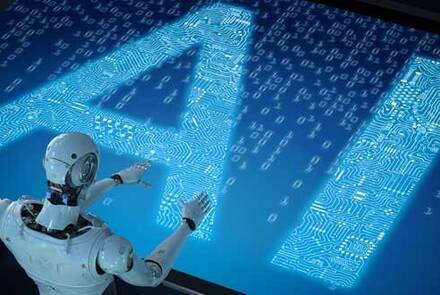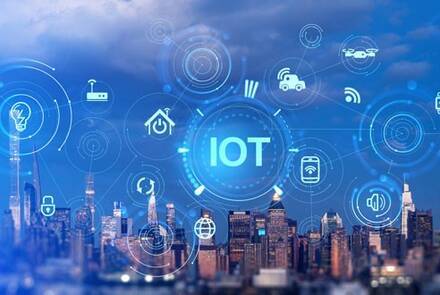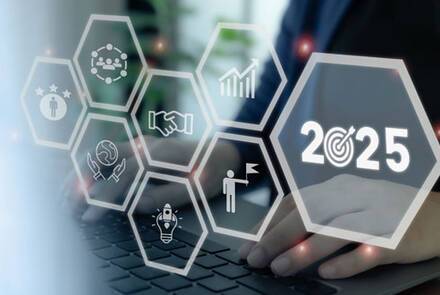Top Trends in Blockchain Technology for 2025
March 28, 2025
Blockchain technology continues to evolve, driving innovation across multiple industries. As we navigate through 2025, several key trends are emerging that are set to redefine the digital landscape.
- Expansion of Decentralized Finance (DeFi):
DeFi platforms have matured, offering a broader range of financial services without traditional intermediaries. In 2025, we are witnessing enhanced scalability and interoperability among DeFi protocols, enabling seamless cross-chain transactions. The integration of DeFi with traditional financial systems is accelerating, fostering a more inclusive and efficient global financial ecosystem. Innovations such as decentralized autonomous organizations (DAOs) are playing a pivotal role in governance, allowing stakeholders to participate directly in decision-making processes.
- Non-Fungible Tokens (NFTs) Diversify Beyond Digital Art:
While NFTs gained initial fame in the art world, their applications have expanded significantly. In 2025, NFTs are being utilized in gaming for in-game assets, in real estate for property tokenization, and in intellectual property rights management. This diversification is unlocking new avenues for ownership, authentication, and monetization of both digital and physical assets. Additionally, the integration of NFTs with virtual and augmented reality is creating immersive experiences, further broadening their appeal and utility.
- Advancements in Blockchain Interoperability:
The proliferation of various blockchain networks has underscored the need for interoperability. Solutions such as cross-chain bridges and interoperable protocols have gained prominence, facilitating the transfer of assets and data across different blockchain ecosystems. This interoperability is fostering collaboration and innovation, enabling developers to build more complex and integrated decentralized applications (dApps). Projects like the Canton Network exemplify efforts to create interconnected blockchain infrastructures that support diverse financial instruments.
- Emphasis on Sustainability and Green Blockchain Initiatives:
Environmental concerns associated with energy-intensive consensus mechanisms have led to a shift towards more sustainable practices. In 2025, the adoption of energy-efficient consensus algorithms like Proof of Stake (PoS) and Proof of Authority (PoA) has become widespread, significantly reducing the carbon footprint of blockchain operations. Furthermore, initiatives such as carbon offsetting and the development of eco-friendly mining practices are aligning blockchain technology with global sustainability goals. These efforts are not only mitigating environmental impact but also enhancing the public perception of blockchain solutions.
- Enhanced Privacy and Security Measures:
As blockchain adoption expands, ensuring data privacy and security remains paramount. Advancements in privacy-preserving technologies, including zero-knowledge proofs and homomorphic encryption, are enabling users to transact and interact on blockchain networks while maintaining the confidentiality of their sensitive information. Secure multi-party computation is also being leveraged to facilitate complex computations without compromising data privacy. These innovations are fostering trust and confidence in decentralized systems, encouraging broader adoption across sectors that handle sensitive data.
- Rise of Central Bank Digital Currencies (CBDCs):
Central banks worldwide have accelerated their exploration and implementation of digital currencies. In 2025, several countries have launched or are piloting CBDCs, leveraging blockchain technology to modernize payment systems and enhance financial inclusion. These digital currencies are streamlining cross-border transactions, reducing costs, and improving monetary policy effectiveness. The integration of CBDCs with existing financial infrastructures is also promoting greater interoperability between traditional and digital financial systems.
- Integration of Artificial Intelligence (AI) with Blockchain:
The convergence of AI and blockchain technologies is unlocking new possibilities across various industries. Decentralized AI models are being developed to enhance data security, automate smart contracts, and optimize network operations. This integration is facilitating more transparent and efficient AI applications, as blockchain's immutable ledger ensures the integrity of data used in AI algorithms. Furthermore, AI-driven analytics are being employed to detect fraudulent activities and predict market trends within blockchain networks.
- Tokenization of Real-World Assets (RWA):
The tokenization of physical assets such as real estate, commodities, and intellectual property is gaining momentum. By representing ownership through digital tokens on a blockchain, these traditionally illiquid assets are becoming more accessible and divisible. This process is enhancing liquidity, reducing transaction costs, and opening up new investment opportunities. Platforms specializing in RWA tokenization are emerging, providing the necessary infrastructure for securely managing and trading tokenized assets.
- Expansion of Decentralized Physical Infrastructure Networks (DePIN):
Decentralized networks are being utilized to manage physical infrastructure, such as telecommunications and energy grids. By leveraging blockchain technology, DePINs are enabling more efficient and transparent management of resources. These networks facilitate peer-to-peer transactions and incentivize participants to contribute resources, leading to more resilient and scalable infrastructure systems. The adoption of DePINs is promoting greater decentralization and democratization of infrastructure management.
- Emergence of Blockchain Gaming and Metaverse Integration:
The gaming industry is increasingly incorporating blockchain technology to create decentralized gaming ecosystems. Play-to-earn models and in-game asset tokenization are providing players with real economic incentives, transforming gaming into a viable source of income. Additionally, the integration of blockchain with metaverse platforms is enabling the creation of virtual worlds where users can own, trade, and monetize digital assets securely. This trend is fostering new forms of social interaction and digital economies.
In conclusion, 2025 is witnessing significant advancements in blockchain technology, characterized by increased integration with other emerging technologies, a focus on sustainability, and the expansion of blockchain applications across various sectors. These trends are collectively driving the evolution of a more decentralized, efficient, and inclusive digital economy.
References
- The Australian. (2024, October 3). Key trends in rapidly changing crypto world. Retrieved from https://www.theaustralian.com.au/business/technology/key-trends-in-rapidly-changing-crypto-world/news-story/1784883a2939ab7e4b9d458584cd68c5
- Wired. (2024). Blockchain Innovation Will Put an AI-Powered Internet Back Into Users' Hands. Retrieved from https://www.wired.com/story/blockchain-open-web-user-data
- The Verge. (2024, October 3). The big boys want in on crypto, too. Retrieved from https://www.theverge.com/2024/10/3/24261453/paypal-visa-blockchain-stablecoins
- Wikipedia. (n.d.). Canton Network. Retrieved March 26, 2025, from https://en.wikipedia.org/wiki/Canton_Network
- BPM.com. (2025). Blockchain and Digital Assets Outlook 2025. Retrieved from https://www.bpm.com/insights/blockchain-and-digital-assets-outlook-2025
For more information about Trigyn's Blockchain Solutions, Contact Us.






